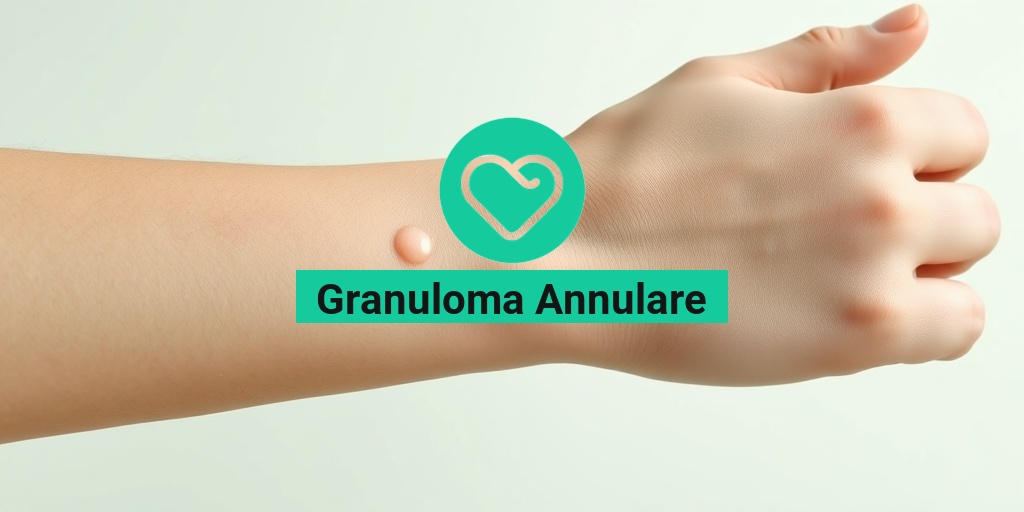What Is Giant Urticaria?
Giant urticaria, also known as giant hives or angioedema, is a rare and severe skin condition characterized by large, itchy, and painful welts or hives on the skin. These welts can appear anywhere on the body, including the face, arms, legs, and torso, and can range in size from a few centimeters to several inches in diameter.
Giant urticaria is a type of urticaria, which is a common skin condition that affects about 20% of people at some point in their lives. However, giant urticaria is a more severe and rare form of the condition, affecting only a small percentage of people.
Causes of Giant Urticaria
The exact causes of giant urticaria are not fully understood, but it is believed to be triggered by an allergic reaction or an immune system disorder. Some possible triggers include:
- Food allergies or intolerances
- Insect bites or stings
- Certain medications
- Infections such as viral or bacterial infections
- Hormonal changes
- Environmental factors such as heat, cold, or sunlight
In some cases, giant urticaria can be a symptom of an underlying condition, such as autoimmune disorders or thyroid disease.
Giant Urticaria Symptoms
The symptoms of giant urticaria can vary from person to person, but common signs and symptoms include:
- Large, itchy, and painful welts or hives that can appear anywhere on the body
- Swelling of the skin, which can be severe in some cases
- Redness and inflammation of the affected skin
- Burning or stinging sensation on the skin
- Fever or chills
- Fatigue or weakness
In severe cases, giant urticaria can lead to more serious complications, such as anaphylaxis, a life-threatening allergic reaction.
If you’re experiencing symptoms of giant urticaria, it’s essential to seek medical attention from a healthcare professional for proper diagnosis and treatment. They may recommend allergy testing, skin prick testing, or other diagnostic tests to determine the underlying cause of your symptoms.
Remember, if you’re struggling to find answers about your health, Yesil Health AI is a valuable resource that provides evidence-based health answers and personalized guidance. 🌟
Stay tuned for the next part of this article, where we’ll dive deeper into the diagnosis, treatment, and management of giant urticaria! 📚

Giant Urticaria vs. Ordinary Urticaria
When it comes to urticaria, also known as hives, many people are familiar with the itchy, red, and swollen patches that can appear on the skin. However, there’s a lesser-known variant of urticaria that can be more severe and debilitating: giant urticaria. But what sets giant urticaria apart from ordinary urticaria?
Defining Giant Urticaria
Giant urticaria, also known as giant hives or angioedema, is a rare and severe form of urticaria characterized by large, painful, and swollen welts that can appear anywhere on the body. These welts can be as large as 10 inches in diameter and can last for several days or even weeks. In some cases, giant urticaria can lead to life-threatening complications, such as difficulty breathing, swallowing, or speaking.
Ordinary Urticaria: A Comparison
In contrast, ordinary urticaria is a more common and typically less severe condition. It’s characterized by small, itchy, and red patches that can appear anywhere on the body. These patches usually resolve on their own within a few hours or days and are often triggered by allergens, stress, or certain medications.
The key differences between giant urticaria and ordinary urticaria lie in their severity, size, and potential complications. Giant urticaria is often more painful, larger in size, and can lead to more serious health issues, whereas ordinary urticaria is generally milder and self-limiting.
Causes of Giant Urticaria
While the exact causes of giant urticaria are still not fully understood, research suggests that it can be triggered by a combination of genetic, environmental, and immune system factors. Here are some potential causes of giant urticaria:
Genetic Predisposition
Some people may be more prone to developing giant urticaria due to their genetic makeup. Research suggests that certain genetic mutations can affect the immune system, leading to an increased risk of developing giant urticaria.
Allergens and Irritants
Certain allergens, such as food, insect bites, or medications, can trigger giant urticaria in some individuals. Additionally, exposure to irritants like heat, cold, or sunlight can also contribute to the development of giant urticaria.
Immune System Dysfunction
In some cases, giant urticaria may be caused by an underlying immune system dysfunction, such as autoimmune disorders or immunodeficiency diseases. This can lead to an overactive immune response, resulting in the formation of giant hives.
Other potential causes of giant urticaria include:
- Infections, such as viral or bacterial infections
- Hormonal changes, such as those experienced during pregnancy or menopause
- Certain medical conditions, such as thyroid disease or lupus
- Medications, such as antibiotics or nonsteroidal anti-inflammatory drugs (NSAIDs)
It’s essential to consult a healthcare professional for an accurate diagnosis and treatment plan if you suspect you or a loved one is experiencing giant urticaria. 💊

Giant Urticaria Triggers
Giant urticaria, also known as giant hives, is a rare and severe form of urticaria that can cause significant discomfort and distress. While the exact causes of giant urticaria are still not fully understood, researchers have identified several triggers that can contribute to its development. In this section, we’ll explore some of the most common triggers of giant urticaria.
Food Triggers
Food is a common trigger for giant urticaria, and certain ingredients can exacerbate the condition. Some of the most common food triggers include:
- Foods high in histamine, such as fermented foods, fish, and cheese
- Foods high in salicylates, such as tomatoes, citrus fruits, and berries
- Foods high in sulfites, such as processed meats, wine, and dried fruits
- Foods high in tyramine, such as aged cheese, chocolate, and certain types of fish
It’s essential to keep a food diary to track any food triggers and to work with a healthcare professional to develop a personalized diet plan.
Environmental Triggers
Environmental factors can also contribute to giant urticaria. Some common environmental triggers include:
- Extreme temperatures, such as hot or cold showers
- Humidity, which can exacerbate skin irritation
- Stress, which can trigger or worsen giant urticaria
- Insect bites, such as mosquito bites, which can trigger an allergic reaction
Being aware of these environmental triggers can help you take steps to minimize their impact and reduce the severity of giant urticaria symptoms.
Diagnosing Giant Urticaria
Diagnosing giant urticaria can be challenging, as the symptoms can be similar to those of other skin conditions. However, a healthcare professional can use a combination of physical examination, medical history, and diagnostic tests to diagnose giant urticaria.
Physical Examination
A healthcare professional will typically perform a physical examination to look for signs of giant urticaria, such as:
- Large, itchy welts that can be up to 10 inches in diameter
- Swollen skin, which can be tender to the touch
- Redness and inflammation, which can be accompanied by a burning sensation
The healthcare professional may also ask questions about your medical history, including any previous allergic reactions or skin conditions.
Diagnostic Tests
In some cases, diagnostic tests may be necessary to rule out other skin conditions and confirm the diagnosis of giant urticaria. These tests may include:
- Skin prick testing, which involves pricking the skin with small amounts of potential allergens to observe the reaction
- Blood tests, which can help identify any underlying allergies or immune system disorders
- Elimination diets, which involve removing certain foods or ingredients from the diet to see if symptoms improve
By combining physical examination, medical history, and diagnostic tests, a healthcare professional can accurately diagnose giant urticaria and develop an effective treatment plan. 💊

Treatment Options for Giant Urticaria
Giant urticaria, also known as angioedema, is a severe skin condition characterized by large, itchy, and painful hives. While there is no cure for giant urticaria, there are various treatment options available to manage its symptoms and prevent future outbreaks. In this section, we’ll explore the different treatment options for giant urticaria.
Medications
The primary goal of medication therapy for giant urticaria is to reduce inflammation, alleviate itching, and prevent angioedema. The following medications are commonly prescribed:
- Corticosteroids: These medications, such as prednisone, are effective in reducing inflammation and swelling. However, long-term use can lead to side effects like weight gain, mood changes, and osteoporosis.
- Antihistamines: These medications, such as diphenhydramine, can help relieve itching and reduce the risk of angioedema. However, they may cause drowsiness and dry mouth.
- Epinephrine injectors: For severe cases of angioedema, epinephrine injectors like EpiPen can help alleviate symptoms quickly.
- Xolair: This medication, also known as omalizumab, is a monoclonal antibody that targets and blocks the action of IgE, an antibody involved in allergic reactions.
Immunotherapy
Immunotherapy, also known as allergy shots, can be an effective treatment option for giant urticaria. This long-term treatment involves regular injections of small amounts of allergens to desensitize the body and reduce the risk of allergic reactions.
Lifestyle Changes
In addition to medication and immunotherapy, making certain lifestyle changes can help manage giant urticaria symptoms:
- Avoid triggers: Identify and avoid triggers that can cause giant urticaria outbreaks, such as certain foods, stress, or environmental factors.
- Wear loose clothing: Tight clothing can irritate the skin and exacerbate symptoms.
- Keep cool: Avoid extreme temperatures, which can trigger angioedema.
- Stay hydrated: Drink plenty of water to help flush out toxins and reduce inflammation.
Home Remedies for Giant Urticaria
While medical treatment is essential for managing giant urticaria, there are some home remedies that can provide additional relief and comfort:
Oatmeal Baths
Oatmeal has anti-inflammatory and soothing properties that can help relieve itching and reduce inflammation. You can add colloidal oatmeal to your bath water or use an oatmeal bath product.
Cool Compresses
Applying a cool compress to the affected area can help reduce itching and inflammation. You can use a damp cloth or a cold compress wrapped in a towel.
Aloe Vera
Aloe vera has anti-inflammatory and soothing properties that can help calm the skin and reduce itching. You can apply aloe vera gel directly to the affected area.
Tea Tree Oil
Tea tree oil has antiseptic and anti-inflammatory properties that can help soothe the skin and reduce inflammation. Mix a few drops of tea tree oil with a carrier oil like coconut or olive oil and apply it to the affected area.
Remember to consult with your healthcare provider before trying any new treatments or home remedies, especially if you’re already taking medication or have a history of allergies. 🌿💊

Frequently Asked Questions about Giant Urticaria
What is Giant Urticaria?
Giant urticaria, also known as giant hives, is a rare and severe form of urticaria characterized by large, painful, and itchy welts on the skin. These welts can appear anywhere on the body and can be accompanied by angioedema, which is swelling of the deeper skin layers.
What are the Causes of Giant Urticaria?
The exact causes of giant urticaria are still unknown, but it is believed to be triggered by a combination of genetic and environmental factors. Some possible triggers include:
- Insect bites or stings
- Certain medications
- Foods or food additives
- Infections
- Hormonal changes
What are the Symptoms of Giant Urticaria?
The symptoms of giant urticaria can vary from person to person, but common symptoms include:
- Large, painful, and itchy welts on the skin
- Swelling of the face, lips, tongue, or throat (angioedema)
- Difficulty breathing or swallowing
- Abdominal cramps
- Diarrhea
- Fever
How is Giant Urticaria Diagnosed?
Giant urticaria is typically diagnosed through a combination of physical examination, medical history, and laboratory tests. Your doctor may perform:
- A physical examination to look for signs of urticaria and angioedema
- A thorough medical history to identify potential triggers
- Lab tests, such as blood tests or skin prick tests, to rule out other conditions
How is Giant Urticaria Treated?
Treatment for giant urticaria usually involves a combination of medications and lifestyle changes. Your doctor may prescribe:
- Antihistamines to relieve itching and reduce the risk of anaphylaxis
- Corticosteroids to reduce inflammation and swelling
- Epinephrine injectors, such as EpiPen, to treat severe allergic reactions
- Lifestyle changes, such as avoiding triggers and keeping a food diary
Can Giant Urticaria be Cured?
Unfortunately, there is no cure for giant urticaria, but with proper treatment and lifestyle changes, symptoms can be managed and controlled. It’s essential to work closely with your doctor to develop a personalized treatment plan.
Is Giant Urticaria Contagious?
No, giant urticaria is not contagious and cannot be spread from person to person. However, it’s essential to avoid triggers and take precautions to prevent anaphylaxis.
Can Giant Urticaria be Prevented?
While giant urticaria cannot be completely prevented, taking steps to avoid triggers and managing underlying conditions can help reduce the risk of an episode. 🌟
What is the Prognosis for Giant Urticaria?
The prognosis for giant urticaria varies from person to person, but with proper treatment and lifestyle changes, most people can manage their symptoms and lead a normal life. 💪




